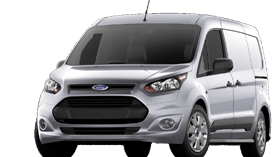- You are here:
- Home »
- Auto & Truck Repair »
- Brakes
Auto Brakes Repair & Service Lapeer MI
 We want our Lapeer customers to have the opportunity to feel comfortable in their vehicle. You can leave your brake repair and service to our professionals, but please don’t hesitate to ask us questions about why a service is needed or how it occurred. Here is some valuable information on brake issues and corrective services:
We want our Lapeer customers to have the opportunity to feel comfortable in their vehicle. You can leave your brake repair and service to our professionals, but please don’t hesitate to ask us questions about why a service is needed or how it occurred. Here is some valuable information on brake issues and corrective services:
Our Brake Repair Services Include:
Brake Pad & Shoe Replacement
Brake pad problems can usually be identified by squealing brakes. If your brake pads deteriorate completely, you’ll hear a grinding metal-on-metal sound when braking, meaning that it’s too late and you’re ruining your rotors or drums! Those with knowledge of auto repair may be able to fix this at home, but you should always see an auto repair professional immediately if you have brake problems.
Resurfacing Rotors
In a disc brake system, rotors are attached to your vehicle’s wheels. When the brake pads grip the rotor, they bring both the rotor and wheels to a stop. However, the friction causes grooves and cracks to appear over time. Resurfacing brings the rotor back to a “like-new” condition, reducing squealing and wobbling. We will give your rotors a thorough inspection and recommend your best course of action.
Caliper Replacement
The brake caliper houses your brake pads and fits around the rotor like a clamp, pressing the pads against the rotor when you brake. A brake caliber problem could cause uneven braking, making your car slide forward when you brake. Uneven braking can also cause your vehicle to slide out of control in bad weather conditions.
Brake Hoses
A brake hose is a tube carrying pressurized brake fluid from the master cylinder to the brakes. A crushed hose can cause a lagged or slow brake, and a leak in the hose can cause the brake, or the entire brake system, to fail. These don’t need to be replaced often, but should be replaced at the first sign of cracking or wear.
Brake Fluid Flushes
Brake fluid will absorb water from the air over time, causing the brake system to become less effective and the fluid to become corrosive, possibly damaging the system. It is important to perform a brake fluid flush regularly to ensure that your vehicle is using fresh fluid. Talk to our technicians about when it’s time for a brake fluid flush.
Anti-Lock Brake System (ABS)
Anti-lock Brake Systems (ABS) ensure that the wheels don’t stop rotating during braking, preventing the car from skidding and offering greater control. If your ABS light comes on, contact us and we will be happy to diagnose and fix the problem.
Brake Repair & Service FAQ
When is a good time to have my brakes checked or repaired?
Routine brake inspections should be conducted during regular maintenance intervals, or every 15,000 miles. All routine maintenance to a car’s braking system such as a brake fluid flush, ABS check, rear brake adjustment, emergency brake adjustment, machining of the rotors, or replacement of brake pads or brake shoes should be completed according to manufacturer specifications which is typically every 40,000 – 45,000 miles. If you are unsure your brakes need service, come in today for a brake inspection.
What kind of work is performed during a typical brake job?
Brake jobs include road test to check for brake pulling and pedal pulsating. ABS operation, inspection of brake lines and hoses, calipers pins and mounting brackets , measuring the vehicle’s brake rotors or brake drums and replace brake pads and machine rotors (if possible) or replace the rotors accordingly.
Why are my brakes squealing?
Brake squeal is usually caused by brake dust. Brakes pads that are almost worn-out can also cause squealing. If you hear a squealing noise, please bring in your vehicle for a brake inspection.
Why does my brake pedal go all the way to the floor?
Most failures like this would be a loss of fluid pressure, common causes can be defective master cylinder, broken or rusted brake lines or hoses, cliper failure or wheel cylinder failiure. Also, air in the closed fluid system is another cause. But air does not suddenly apperar in the system. You will need a trained technician to perform an inspecttion before an accurate estimate of the repair cost can be given.
How long do brakes last?
No one can give you a mileage number or a calendar date, there are too many different variables. Your best bet is to have your brakes inspected every other tire rotation or sooner if you start to have a problem.
How Do Brakes Work?
Your car has two types of brakes—rear and front ones. Front brakes use rotors (big metal disks) as a braking mechanism. Rear brakes may use rotors too, but many manufacturers install expanding drum brakes to lower the production cost. When you press the brake pedal, it engages the brake fluid and pushes it under pressure through a series of tubes. As the brake fluid reaches the front wheels, it activates a caliper that pushes brake pads against both sides of the rotor, creating friction and causing it to slow down its motion. In the back wheels, the brake fluid goes to the wheel cylinder inside the drum and causes the brake shoes to move toward the rotating drum, which makes the brake drum slow down and stop.
